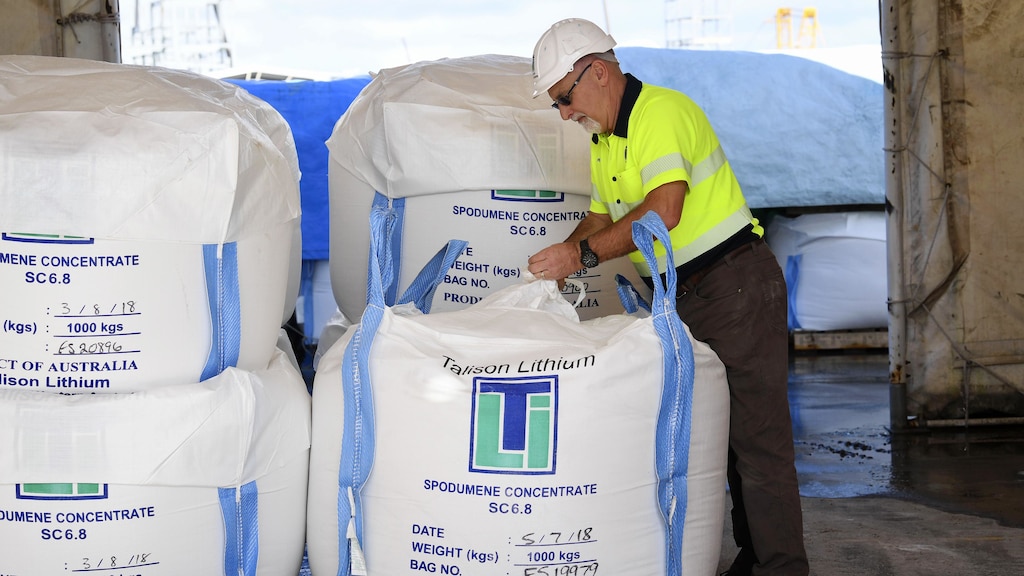
DRC's Manono lithium potential confirmed

A scoping study has confirmed the potential of the Manono lithium project in the Democratic Republic of the Congo (DRC) and will now be followed by a full feasibility study, which is expected to be completed in the second quarter of 2019, Perth-based AVZ Minerals said in a project update. It owns 60pc of the project with the other 40pc held by state-owned and private DRC investment vehicles.
A case one study is based on processing 2mn t a year of ore from the mineral resource, which includes 43mn t in the measured category, 104mn t in the indicated category and 112mn t in the inferred category. It is expected to involve capital expenditure of $150mn-160mn and have a pre-tax and pre-royalties net present value of $1.6bn.
Cash operating costs are estimated at $355/t, with lithium concentrate prices estimated at $920/t over the life of the project.
AVZ and its partners are looking into the possibility of doubling processing capacity to 4mn t/yr of ore and producing as much as 10mn t/yr of ore, indicating the potential for Manono to become a much bigger player on the global lithium stage.
"Manono is now the largest undeveloped hard rock lithium project in terms of grade, mine life and expandability," managing director Nigel Ferguson said. "We are confident that project economics can be improved further, especially in the areas of transport, processing and power costs. The recovery of tin as a by-product can add considerable value to the bottom line and has not been included in any financial modelling."
The Manono joint-venture partners will be seeking to qualify for a five-year tax concession offered by the DRC government for projects of significance in the country.
Manono will not stay as a 2mn t/yr operation for long as it is AVZ's intention to self-fund further expansion from retained earnings, Ferguson said.
"Given the tier-one nature of Manono in terms of size, quality and homogenous resource, we are working quickly to bring 4mn t/yr and 10mn t/yr studies to the market," he added. These studies will particularly focus on leveraging economies of scale and optimisation to improve results contained in the 2mn t/yr study.
The 4mn t/yr and 10mn t/yr studies are expected to be completed in November and are aimed at providing further evidence of Manono's status as a globally important lithium development.
It is significant to compare the Manono scoping study with two of Australia largest new lithium projects, which have in the past few days made their first concentrate shipments to offtake partners in China.
Stage one of Pilbara Minerals' Pilgangoora project is ramping up to producing 350,000 t/yr of lithium concentrate from a 2mn t/yr processing operation. This is smaller than Manono's case one profile. An investment decision is due by the end of this year on expanding Pilgangoora to a 5mn t/yr operation producing up to 800,000 t/yr of lithium concentrate, similar to Manono's case two profile.
Stage one of Altura Mining's Altura project, also in the Pilgangoora region of Western Australia, is ramping up to produce 220,000 t/yr of lithium concentrate, half the case one target for Manono. Altura is expected to soon announce an investment decision on doubling output to 440,000 t/yr through a duplicate second stage of the project, similar to Manono's case one profile.
A major difference is that Pilbara Minerals and Altura Mining are already producing in an area with world-class infrastructure and logistics, while AVZ and its partners have yet to develop mine infrastructure and will have to negotiate a challenging regulatory and operational environment, which includes transporting concentrate to the Tanzanian port of Dar es Salaam.



Trump weighs using $2 billion in CHIPS Act funding for critical minerals

Codelco cuts 2025 copper forecast after El Teniente mine collapse

Electra converts debt, launches $30M raise to jumpstart stalled cobalt refinery

Barrick’s Reko Diq in line for $410M ADB backing

Abcourt readies Sleeping Giant mill to pour first gold since 2014

Nevada army depot to serve as base for first US strategic minerals stockpile

SQM boosts lithium supply plans as prices flick higher

Viridis unveils 200Mt initial reserve for Brazil rare earth project

Tailings could meet much of US critical mineral demand – study

Kyrgyzstan kicks off underground gold mining at Kumtor

Kyrgyzstan kicks off underground gold mining at Kumtor

KoBold Metals granted lithium exploration rights in Congo

Freeport Indonesia to wrap up Gresik plant repairs by early September

Energy Fuels soars on Vulcan Elements partnership

Northern Dynasty sticks to proposal in battle to lift Pebble mine veto

Giustra-backed mining firm teams up with informal miners in Colombia

Critical Metals signs agreement to supply rare earth to US government-funded facility

China extends rare earth controls to imported material

Galan Lithium proceeds with $13M financing for Argentina project

Kyrgyzstan kicks off underground gold mining at Kumtor

Freeport Indonesia to wrap up Gresik plant repairs by early September

Energy Fuels soars on Vulcan Elements partnership

Northern Dynasty sticks to proposal in battle to lift Pebble mine veto

Giustra-backed mining firm teams up with informal miners in Colombia

Critical Metals signs agreement to supply rare earth to US government-funded facility

China extends rare earth controls to imported material

Galan Lithium proceeds with $13M financing for Argentina project

Silver price touches $39 as market weighs rate cut outlook


















